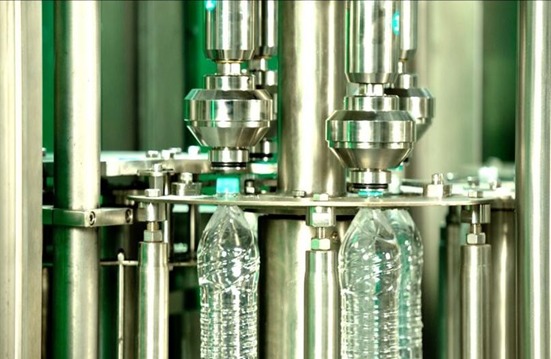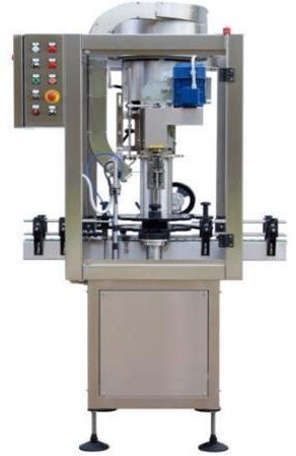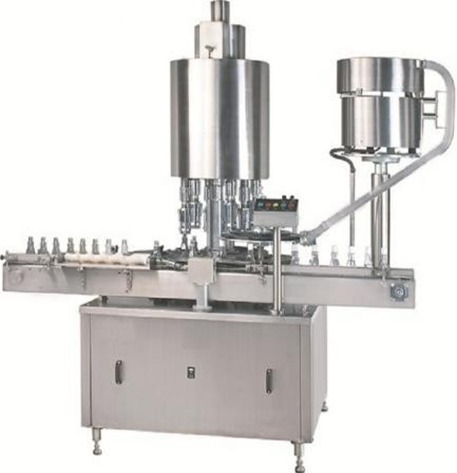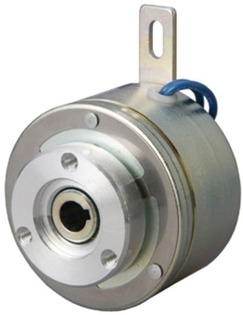
NAVIGATING THE MAZE: CHOOSING THE PERFECT CAPPING MACHINE
In a busy store where lots of products are trying to get noticed and people have to decide quickly what to buy, packaging is really important. It is not just something that wraps up your product; it is like the face of your brand, the first thing you notice about a product. Think about when you grab a bottle from the shelf—what is the first thing you touch? It is usually the cap or lid, right? That marks the beginning of your encounter with the product, much like the opening scene of a play.
Picture this: You are really thirsty and looking for the perfect drink. You scan the shelves until you see a bottle that looks promising. But when you go to grab it, the cap feels loose, like it might fall off. You start to wonder: Is the drink sealed up okay? Will it stay fresh? In that moment, you are not so sure anymore,and you hesitate to buy it.
That is the significance of packaging. It is not just about making things look nice or keeping them safe—it is about making people feel good about what they are buying. A lid that is tight and secure is not just handy; it shows that you can count on the product. It is like saying, “We have thought about every detail to make sure you have a great experience, from the first look to the last taste.”
Think about it: a well-designed cap or closure is not just a functional necessity; it is a silent reassurance to your customers. It whispers, “Your satisfaction matters. We have taken every precaution to ensure that your product arrives in perfect condition, ready to delight your senses.”
But it is not just about customer satisfaction—although that is certainly a crucial aspect. It is also about preserving the integrity of your product. A loose closure could spell disaster, allowing air and contaminants to infiltrate your carefully crafted formula, compromising its freshness and taste. In the competitive landscape of today’s market, where discerning consumers demand nothing short of perfection,every detail counts.
But here is the thing: finding the perfect capping machine can seem like finding your way through amaze.There is manual, semi-automatic and automatic options, each with its own unique features and benefits. Let us dive in and explore them further.
MANUAL CAPPING MACHINES
Imagine a skilled artisan meticulously crafting each cap by hand—it is a similar concept with manual capping machines. These machines require the operator to be directly involved in the capping process,ensuring that every cap is placed accurately and securely. This hands-on approach allows for a level of precision and attention to detail that may be lacking in automated systems. Additionally, manual capping
machines are typically more affordable and easier to maintain than their automated counterparts, making them an attractive option for small businesses with limited budgets.
Moreover, manual capping machines offer a level of flexibility that automated systems may lack. Operators have greater control over the capping process, allowing them to adjust settings and make real-time
corrections as needed. This personalized oversight is invaluable for businesses that prioritize quality control and consistency in their products.
In summary, while manual capping machines are known for their cost- effectiveness and adaptability, they may not suffice in meeting the demands of contemporary production standards. Today, industries emphasize swift throughput and elevated productivity as fundamental. However, manual capping machines, reliant on human operation for each bottle, inherently lack the efficiency required for high-speed, high-output manufacturing.

SEMI-AUTOMATIC CAPPING MACHINES
Semi-automatic capping machines represent a remarkable fusion of manual precision and automated efficiency, offering a versatile solution that caters to the needs of medium-sized businesses. Designed to strike a delicate balance between human intervention and technological advancement, these machines provide an ideal platform for enhancing productivity without the complete transition to fully automated systems.
Tailored specifically for medium-sized enterprises seeking to optimize their production processes, semi-automatic capping machines fill a crucial niche in the market. Unlike their fully automated counterparts, which may be prohibitively expensive for businesses with modest budgets, semi-automatic machines offer a cost-effective alternative that delivers tangible results. This accessibility makes them an attractive option for businesses looking to increase efficiency without breaking the bank.
Despite their semi-automated nature, these machines provide a significant boost to productivity by streamlining the capping process. While operators are still required to manually place caps on bottles,the machines ensure consistent and secure capping through automated tightening mechanisms. This not only minimizes the risk of human error but also accelerates the overall production pace, allowing businesses to meet demand more efficiently

Moreover, semi-automatic capping machines offer a level of flexibility that fully automated systems may lack. Operators have greater control over the capping process, allowing for adjustments to be made on the fly to accommodate different bottle sizes or cap types. This adaptability ensures that businesses can respond swiftly to changing production requirements without compromising on quality or efficiency.
In addition to their operational benefits, semi-automatic capping machines contribute to a more ergonomic and user-friendly work environment. By automating repetitive tasks and minimizing manual labor, these machines reduce strain on workers and improve overall workplace efficiency. This not only enhances employee satisfaction but also reduces the risk of workplace injuries, further bolstering the business’s bottom line.
To sum up, the primary drawback of a semi-automatic capping machine is its dependence on human involvement during specific stages of the capping process. This reliance can result in issues like reduced throughput, the possibility of human error and the necessity for skilled operators. Despite offering enhanced efficiency over manual alternatives, semi-automatic machines generally achieve lower throughput rates compared to fully automated systems and might entail a considerable initial investment.
AUTOMATIC CAPPING MACHINES
Automatic capping machines stand as the pinnacle of efficiency and reliability in the world of packaging. If your goal is to achieve unparalleled consistency and speed in your production processes, these machines are the ultimate solution. They serve as the superheroes of
the capping world, swooping in to ensure that each bottle is sealed perfectly and efficiently without fail. Tailored specifically for large-scale operations with high- volume production requirements, automatic capping machines are engineered to deliver caps with remarkable precision and speed. Whether you are packaging hundreds or thousands of products per hour, these machines rise to the occasion, seamlessly handling the demands of even the most intensive production environments.

One of the defining features of automatic capping machines is their ability to deliver caps automatically,without the need for direct operator intervention. Equipped with advanced robotics and technology, these machines are capable of precisely applying caps to bottles with unmatched efficiency. Furthermore, they
can be adjusted to apply just the right amount of force, ensuring a secure seal without over-tightening or damaging the packaging.
In addition to their exceptional performance, automatic capping machines are renowned for their user friendly interface and ease of operation. With intuitive controls and simple setup procedures, these machines can be operated by personnel with minimal training or experience. By eliminating the need for complex manual adjustments, automatic cappers streamline the production process, saving time and reducing the risk of errors.
In summary, automatic capping machines represent the pinnacle of efficiency, reliability and ease of use in the packaging industry. Whether you are a large-scale manufacturer or a high-volume producer, these machines offer unparalleled consistency and speed, ensuring that each bottle is sealed perfectly and efficiently. With their advanced technology and user-friendly design, automatic cappers are the ideal choice for businesses looking to maximize productivity and maintain the highest standards of quality in their packaging operations. Given their efficiency, automatic machines are the preferred choice for effective production.
Now, let us delve into how they work.
1. Feeding: This step involves introducing the bottles into the capping machine, positioning them for the sealing process. Imagine a conveyor belt moving bottles along, bringing them to the capping station where the magic happens.
2. Cap Sorting: Here, the caps are organized and aligned correctly before being placed onto the bottles. Think of it like arranging a deck of cards so that they are all facing the right way before dealing them out.
3. Cap Placement: Once sorted, the caps are carefully placed onto the openings of the bottles. This can be done manually, where an operator places each cap individually, or automatically, where the machine handles the placement process. It is like putting the lid on a jar, ensuring it fits snugly and aligns perfectly.
4. Capping: Now comes the main event—the sealing process. The caps are pressed down onto the bottle openings to create a secure seal. Different methods are used depending on the type of closure, whether it is screwing on a cap, pressing it into place, snapping it shut, or corking it like a fine wine.
5. Torque Adjustment: When it comes to screw caps, torque adjustment is crucial. It ensures that the caps are tightened just right, according to the specified requirements. Torque, often overlooked, plays a pivotal role in capping. Getting the torque right is essential for effectively sealing the bottle without causing leaks or making it difficult to open. Too much force can lead to imperfect seals, while too little force can result in leaks or caps that are too easy to remove. Adjusting the torque ensures that each cap is secured properly, maintaining product integrity and user satisfaction.
6. Quality Control: To ensure that the seals on the bottles are flawless, some capping machines have built-in quality control systems. These systems examine the seals for any imperfections, using methods like visual inspection or pressure testing. This ensures that only bottles with secure and reliable seals move forward in the production process.
7. Discharge: Once the bottles are securely sealed, they are released from the capping machine. This marks the end of the capping process and the sealed bottles move on to the next stage of production. They may be labelled, packaged and prepared for distribution to retailers or consumers, continuing their journey from the manufacturing facility to store shelves or doorsteps.
CAPPING CHUCK
Understanding the intricate details of capping machines involves more than just recognizing the different types of machines available. It is equally important to delve into the mechanisms responsible for screwing caps onto bottles effectively and at the heart of this process lies the capping chuck. A bottle capping chuck is a fundamental tool utilized by capping machines to securely grip the cap of a bottle, facilitating its removal or application. These chucks come in various materials, from metal to plastic and even rubber, with stainless steel being the most prevalent due to its durability and resistance to corrosion.
Each type of capping chuck boasts its own set of advantages and disadvantages, making it imperative to choose the right one tailored to the specific requirements of your capping machines. The significance of the capping chuck cannot be overstated, as it applies the necessary torque to properly tighten caps onto containers. Proper sizing and compatibility with the cap being used and the capping headset are crucial factors to consider when selecting a capping chuck. Additionally, the method of actuation and usage on the machine should also be taken into account. There are several types of bottle capping chucks available, each designed to address specific needs and challenges in the capping process:
FIXED CHUCKS
Fixed chucks are the most common type and are designed to fit one specific cap design and color. They are typically composed of a single piece with no moving components, making them suitable for both automatic and semi-automatic capping machines.
FLEX CHUCKS
Flex chucks feature floating “teeth” or “segments” that interface with the knurls of the cap, allowing for a small amount of motion. This design enables one chuck to be used for caps of different colours, offering versatility and cost-effectiveness.
MECHANICAL CHUCKS
Mechanical chucks have articulating jaws that clamp onto the cap, requiring an actuation rod to open and close the jaws at the appropriate time. PNEUMATIC CHUCKS
Pneumatic chucks, similar to mechanical chucks, have articulating jaws but are driven by air pressure.They require solenoids to control the air supply for actuation.
INTRODUCING THE CAPPING CLUTCH
The capping clutch is a vital part of capping machinery, crucial for ensuring precise and effective sealing of bottles, jars or containers. Typically found in semi-automatic or fully automated capping systems,it controls the application of caps during the capping process. Acting as a mechanism to engage and disengage the rotational motion of the capping head, it enables the tightening of caps with the desired torque. Once the tightening is complete, the capping clutch stops the rotational motion to prevent over tightening or damage. Reliable capping clutches are essential for maintaining product quality, consistency and minimizing the risk of leaks or contamination. Let us explore some commonly used capping clutches.
HYSTERESIS MAGNETIC CLUTCH
In the process of sealing bottles, hysteresis magnetic clutches are seamlessly integrated into packaging lines, specifically within capping machines. These machines hold the responsibility of securely sealing caps onto bottles, ensuring the integrity of the product and safeguarding against leakage or contamination. Operating on the principle of utilizing magnetic fields across an air gap to transmit torque, hysteresis magnetic
clutches eliminate the need for physical contact during operation. When an electrical current is applied, the resulting magnetic fields interact across the air gap, facilitating the transmission of torque without direct contact.

The hysteresis magnetic clutch plays a pivotal role in controlling the torque applied during the cap tightening process. As bottles progress along the packaging line, caps are positioned onto the bottle openings. The hysteresis clutch engages to transmit torque from the drive unit to the capping mechanism,ensuring precise control to tighten the cap to the desired level without risking over-tightening, which could potentially cause damage to the bottle or cap threads.
A notable advantage of hysteresis magnetic clutches is their capability to provide smooth and stable torque transmission, ensuring uniformity in the capping process across all bottles and maintaining consistency in seal quality. In contrast to traditional clutch systems that may exhibit erratic movements or fluctuations in torque, hysteresis clutches offer precise and dependable operation, thus enhancing overall packaging efficiency.
Moreover, hysteresis magnetic clutches are well-suited for use in clean-room environments, where even the slightest contamination can have significant consequences. Their particle-free operation and precise torque control make them an ideal choice for sealing caps in sterile packaging processes, such as those found in pharmaceutical clean rooms or facilities handling sensitive medical devices.
In summary, hysteresis magnetic clutches play a crucial role in the packaging industry by ensuring precise torque control, smooth operation and particle-free performance during the sealing of caps on to bottles. Their integration into packaging lines ensures the reliability and efficiency of the packaging process while upholding the hygiene standards essential for industries where product integrity is paramount.
ELECTRONIC CAPPING CLUTCH
The electronic capping clutch, also referred to as an electromagnetic clutch, operates by leveraging electromagnetic principles to meticulously regulate the torque exerted during the capping process. Here is a comprehensive explanation of its functionality:
Comprised of two fundamental components, namely the rotor and the stator, the electronic capping clutch embodies a pivotal role in the capping machinery. The rotor, typically affixed to the rotating shaft of the capping machine, finds its counterpart in the stationary stator. Crafted from ferromagnetic materials, both elements facilitate magnetic interaction.

Surrounding the stator lies an electromagnetic coil, interconnected with an electrical power source. Uponthe application of electrical current to the coil, a magnetic field is generated around the stator, settingthestage for clutch operation.
This magnetic field interacts with the ferromagnetic rotor, inducing magnetismwithinitsmaterial.Consequently, a magnetic attraction ensues between the rotor and the stator, prompting their engagement.As this magnetic attraction intensifies, the rotor gravitates towards the stator, establishingafirmconnection between the two components.
This engagement facilitates the seamless transfer of torque from the rotor to the stator, empoweringthecapping mechanism to securely fasten the cap onto the bottle. The precise magnitude of torquetransferredcan be meticulously controlled by modulating the strength of the electrical current coursingthroughtheelectromagnetic coil. Through this adjustment, the magnetic force and subsequently, the torqueexertedduring the capping process, can be finely tuned.
Upon discontinuation of the electrical current to the electromagnetic coil, the magnetic fielddissipates,prompting the disengagement of the rotor and stator. This disengagement mechanismensures thesmoothoperation and precise control integral to the capping process.
In addition to providing precise torque regulation, electronic capping clutches offer a multitude of advantages, including rapid engagement and disengagement, compatibility with automated capping systems and enhanced durability requiring minimal maintenance compared to mechanical counterparts.
In summary, electronic capping clutches emerge as a dependable and efficient solution for meticulously managing torque during the capping process, thereby ensuring consistent and secure sealing of bottle caps across a myriad of industrial applications.
ELEVATING PRECISION: DUNAMIS’ CUTTING-EDGECAPPINGINNOVATION
At Dunamis, we have seamlessly integrated the capping process into our RFC(Rinsing, Filling and Capping) Machine, ensuring a cohesive and efficient production line. Within this unified system,our capping unit utilizes a magnetic capping clutch to reliably secure bottle caps in place
Here is a breakdown of the process: Initially, caps are fed from a chute onto a dedicated cap transfer plate, where they are swiftly grasped by the capping clutch. This clutch comprises a bottom magnet mounting disc and a top magnet mounting disc. Connected by threads, the top
magnet mounting disc and inner spindle rotate with the assistance of gears. To induce rotation in the lower magnet mounting disc, seven
magnets with opposing polarities are positioned on both the upper and lower discs. As these magnets approach each other, their repulsive force grips the lower magnet mounting disc, causing it to rotate in synchrony with the upper disc.

As the capping clutch descends, guided by a precise capping cam, it retrieves the cap through the engagement of the cap’s threads with the knurled surfaces within the clutch, ascending smoothly afterward. Upon the arrival of a bottle post-filling, the capping clutch descends once more, accurately positioning the cap atop the bottle with consistency.
Upon reaching the desired level of tightness, further rotation of the bottom disc ceases, indicating the completion of the tightening process, while the top bottom disc continues to rotate as it is rotated with the help of gears and it cannot be stopped, and the capping clutch lifts upwards. Additionally,to accommodate various cap sizes, the distance between the magnets can be adjusted to achieve the required torque.
In case a cap gets stuck within the capping clutch, as it reaches the apex of the cam profile, the knock-out bush contacts the bottom plate of the capping unit. This action causes the knock-out pin, attached to the bush, to depress the knock-out rod downward, effectively dislodging any stuck cap.
This straightforward yet sophisticated mechanism harnesses the inherent repelling force of magnets to accomplish precise cap tightening without added complexity, offering a notable advantage inefficiency and reliability. Furthermore, our RFC machine operates using a single motor, resulting inreducedpowerconsumption throughout the entire production line.